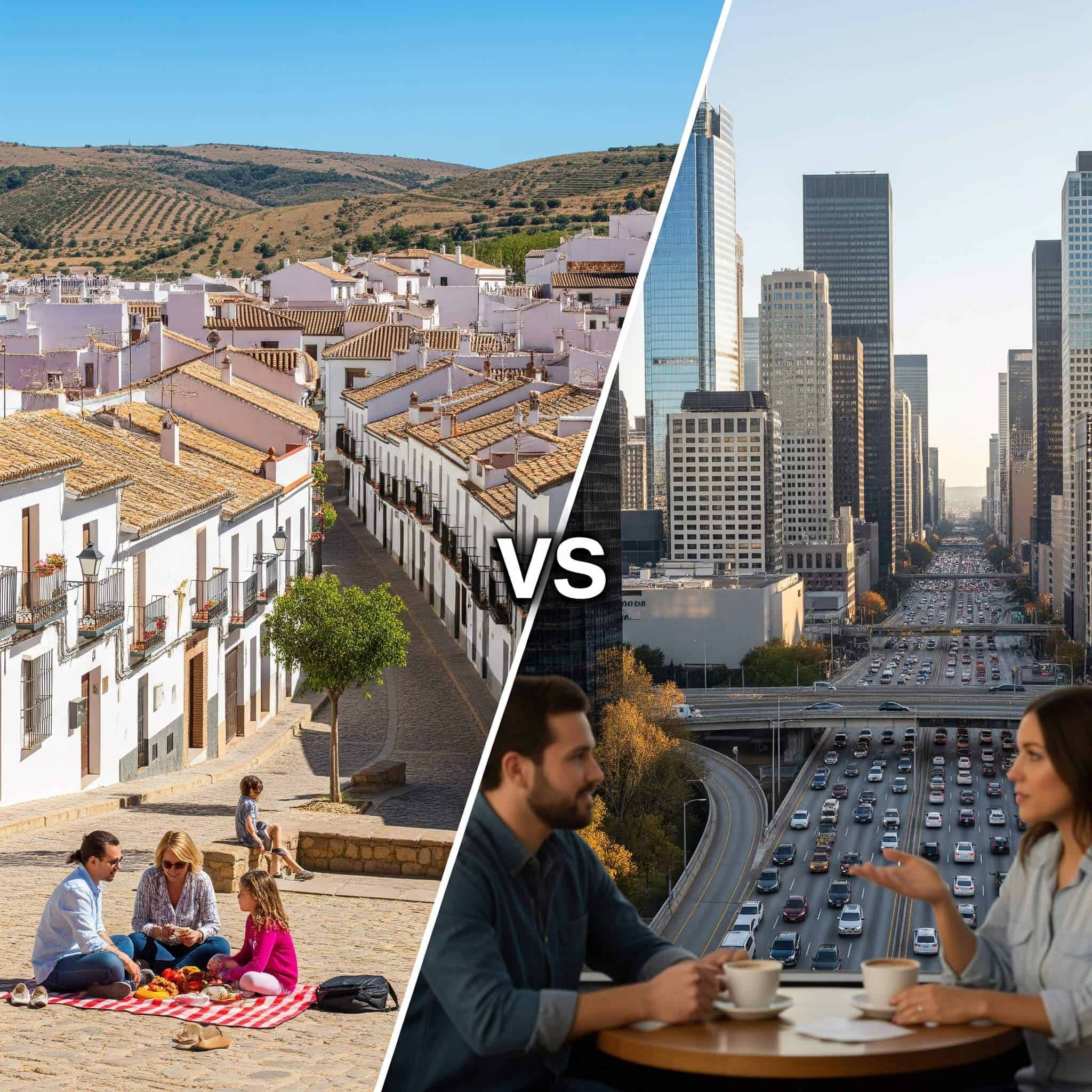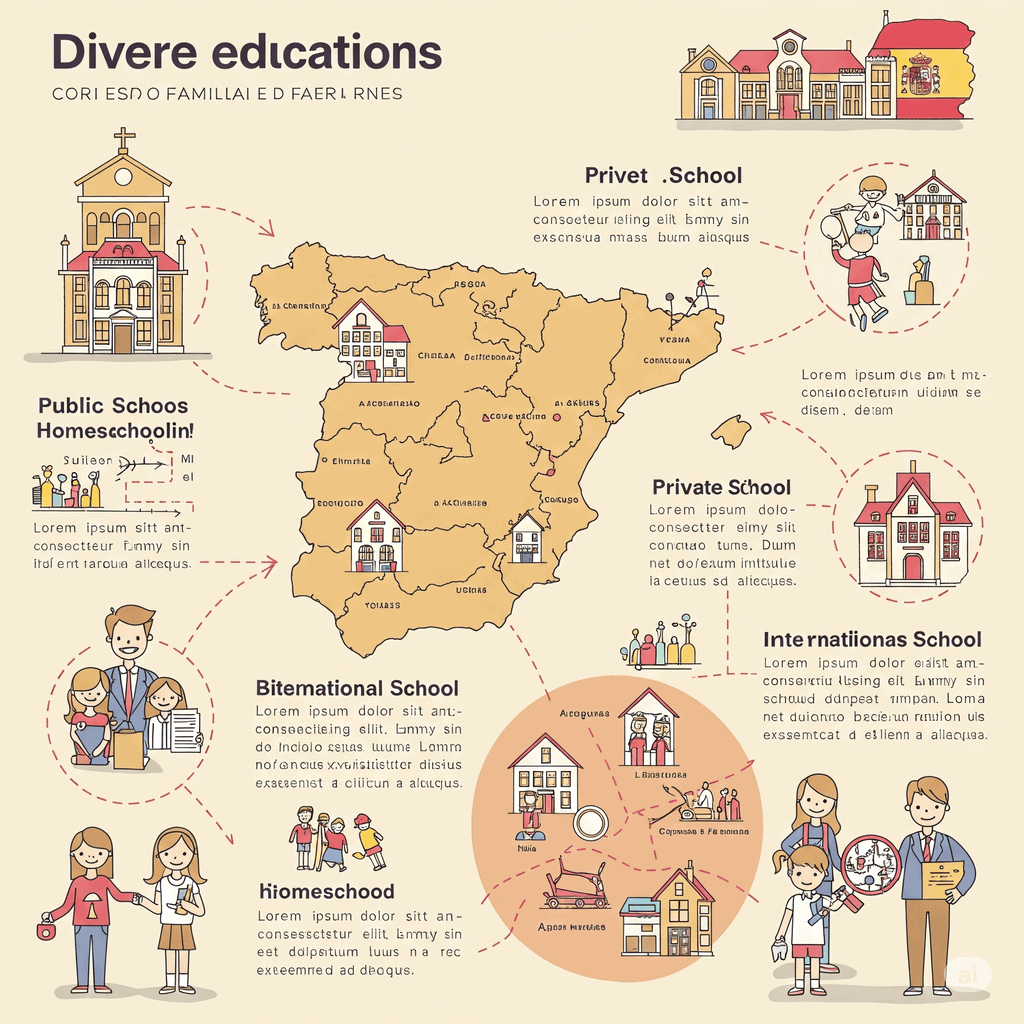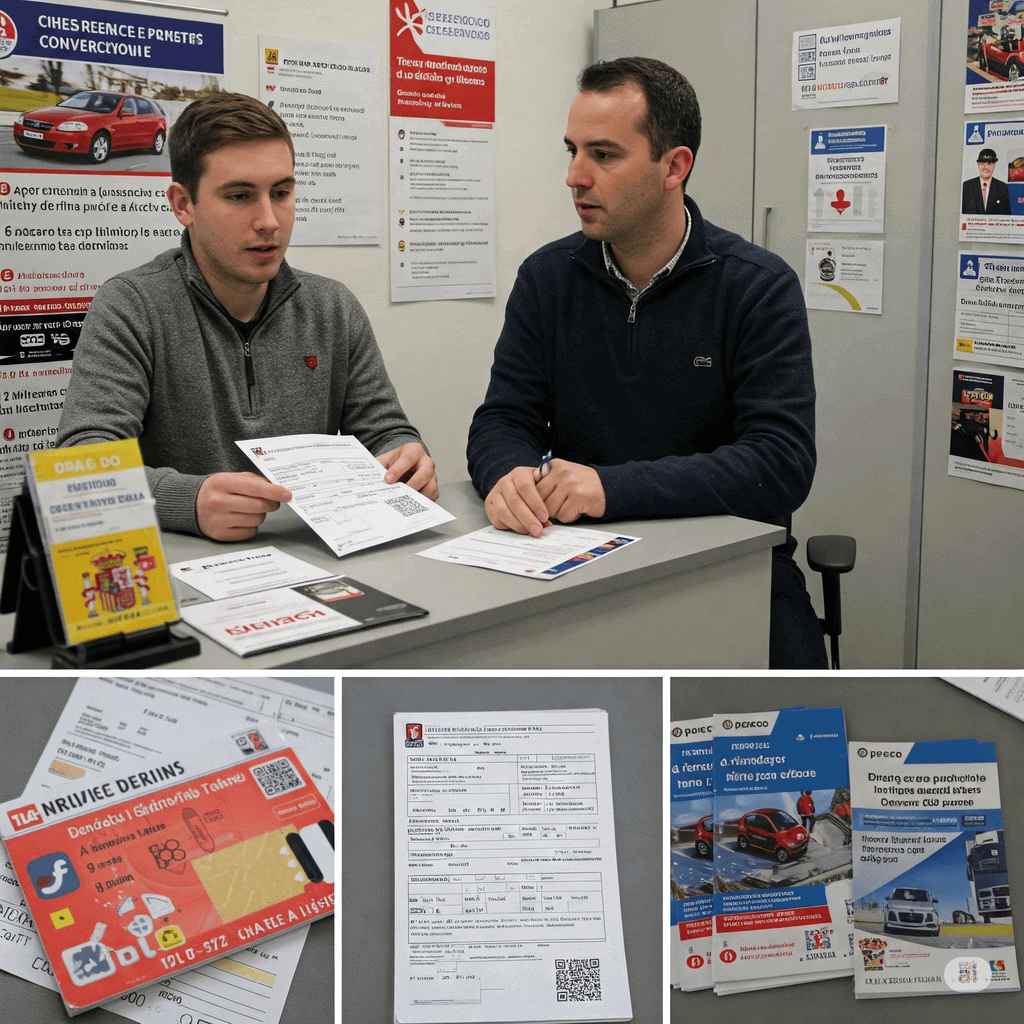Moving to Spain from the US: 25 Essential Considerations for a Smooth Transition
Table of Contents
Immigration and Legal Requirements
Financial and Practical Considerations
Housing and Regional Considerations
Cultural Integration and Lifestyle
Administrative and Practical Matters
How Jiffy Junk Can Help With Your Move
Final Thoughts
Immigration and Legal Requirements
1. Non-Lucrative Visa (Retirement Visa)
If you’re planning on moving to Spain without needing to work, the Non-Lucrative Visa might be your ticket. This visa is perfect for retirees or anyone with sufficient passive income to support themselves. You’ll need to show around €27,115 in annual income, get comprehensive health insurance, provide a clean criminal record, and submit a medical certificate.
The paperwork can be intense! All your documents need to be apostilled, including birth certificates, marriage certificates, and FBI background checks. These can’t be more than 90 days old when you apply, so timing is crucial.
I’ve found that financial requirements are typically the biggest hurdle for most Americans. Spanish authorities want to see 12 months of consistent bank statements showing regular income or substantial savings. They’re looking for stability, not just a temporary influx of cash.
2. Digital Nomad Visa
Spain’s Digital Nomad Visa is a game-changer for remote workers moving to Spain from the US. Introduced recently, this visa specifically targets those who can work remotely for non-Spanish companies. You’ll need to prove your employment status, meet minimum income requirements (typically around €2,000/month), and have comprehensive health insurance.
When applying, be prepared to provide solid evidence of your remote work arrangements. This includes employment contracts that specifically mention your permission to work remotely. The Spanish authorities are thorough about this!
One of the biggest perks? Tax benefits! You’ll pay a reduced rate of 24% on income up to €600,000, compared to standard progressive rates that can reach up to 47%. For many Americans, this alone makes the Digital Nomad Visa worth pursuing.
Visa Type | Primary Applicants | Income Requirement | Work Permission | Renewal Period | Path to Residency |
|---|---|---|---|---|---|
Non-Lucrative | Retirees, Passive Income | €27,115/year | No work allowed | Annual for 5 years | Yes, after 5 years |
Digital Nomad | Remote Workers | €2,000/month | Remote only | Initial 1 year, then 2 years | Yes, after 5 years |
Student | Enrolled Students | €900/month | Part-time (20hrs/week) | Per academic program | Possible with job offer |
Work | Employees with Spanish contracts | N/A (employment-based) | Full work rights | 1-2 years initially | Yes, after 5 years |
Golden Visa | Investors | €500K+ investment | Full rights | 2 years, then 5 years | Yes, after 5 years |
3. Student Visa
Wondering how to move to Spain through education? The Student Visa offers a fantastic pathway for Americans accepted into Spanish educational institutions. You’ll need an acceptance letter from an accredited Spanish school, proof of financial means (about €900/month), and health insurance.
Your educational program must include at least 20 hours of weekly instruction to qualify. This isn’t just a technicality – Spanish authorities want to ensure you’re genuinely studying, not just using the visa as an easy entry point.
The financial requirements add up to approximately €10,800 annually for living expenses. I’ve seen many prospective students underestimate this aspect, so make sure your finances are in order before applying.
A major advantage of this visa is that it allows part-time work up to 20 hours per week, giving you some income while studying. Even better, it can potentially lead to residency if you secure employment after completing your studies.
4. Work Visa
For those looking to immigrate to Spain through employment, Work Visas are available but challenging to obtain. You’ll need a job contract from a Spanish employer who must prove they’ve attempted to hire within the EU first.
The process is quite involved. Your potential employer must obtain work authorization from Spanish labor authorities before you can even apply for the visa. This can take months, so patience is essential.
Initial work permits typically remain valid for one year and are tied to a specific employer and occupation. This means you can’t easily switch jobs during your first year, which can feel restrictive.
Spain’s high unemployment rate and preference for EU citizens make these visas difficult to secure. Your best chance is through multinational company transfers or in specialized fields where Spanish talent is scarce. I’ve seen success stories primarily in tech, healthcare, and certain teaching positions.
5. Golden Visa
The Golden Visa offers a fast-track to residency for those with significant financial resources. You can qualify by investing €500,000 in real estate, €1 million in Spanish company shares, or €2 million in Spanish government bonds.
Your investment must be made without financing for the real estate option – meaning no mortgages. This is a pure cash investment, which limits accessibility but streamlines the process.
Residency permits under this program are initially valid for two years and renewable for five-year periods. A major advantage is that there are no minimum stay requirements to maintain your status, making this ideal for those who want legal residency without living in Spain full-time.
The Golden Visa also offers a path to citizenship after 10 years, providing long-term security for wealthy investors. While expensive, it’s by far the most straightforward option if you have the financial means.
Financial and Practical Considerations
6. Cost of Living Comparison
When moving to Spain from the US, you’ll generally find your money stretches further. In Madrid’s city center, a one-bedroom apartment typically costs €900-1,200/month compared to $2,000-3,000 in major US cities. Groceries run about 20-30% less expensive than what you’re used to paying.
Utility costs average €100-150 monthly for a standard apartment, though winter bills can shock Americans used to efficient central heating. Many Spanish buildings have older heating systems that cost more to run while providing less comfort.
Restaurant dining is where you’ll see some of the biggest savings. A three-course menu del día (lunch special) typically costs just €10-15, offering incredible value. I’ve found myself eating out more frequently in Spain simply because it’s so affordable compared to the US.
Expense Category | Spain (Average) | US (Average) | % Difference |
|---|---|---|---|
One-bedroom apartment (city center) | €900/month | $2,000/month | -55% |
Utilities (electricity, heating, water) | €120/month | $150/month | -20% |
Internet (60 Mbps) | €40/month | $60/month | -33% |
Grocery basket (basic items) | €50/week | $70/week | -29% |
Restaurant meal (mid-range) | €15/person | $25/person | -40% |
Public transportation (monthly pass) | €45 | $80 | -44% |
Healthcare (private insurance) | €100/month | $400/month | -75% |
Gasoline (1 liter/gallon) | €1.60/liter | $0.80/liter | +100% |
7. Banking Setup
Setting up banking in Spain typically begins with opening a non-resident account, then transitioning to a resident account after obtaining your visa. You’ll need your NIE number (foreigner ID), passport, proof of address, and sometimes an initial deposit.
Before moving to Spain, many Americans need to declutter their homes. Check out our comprehensive decluttering guide to simplify the process before your international move.
Banking appointments often require scheduling weeks in advance, particularly at traditional Spanish banks. This caught me off guard when I first arrived! Plan ahead and make appointments as soon as possible.
Monthly maintenance fees range from €0-20 depending on the account type and whether you meet minimum balance or direct deposit requirements. I recommend considering banks with English-speaking staff and online banking in English, such as Sabadell, BBVA, or online banks like N26, which can make your transition much smoother.
8. Tax Implications
US citizens must file US taxes regardless of where they live, plus Spanish taxes if they become residents. This double obligation catches many Americans by surprise when moving to Spain.
Spain taxes worldwide income for residents (those living there 183+ days/year) with rates ranging from 19% to 47% depending on income level. The Spanish tax year follows the calendar year with returns typically due by June 30th of the following year.
Wealth tax applies in most autonomous communities for worldwide assets exceeding approximately €700,000. This can be a significant consideration for retirees or high-net-worth individuals.
Here’s a real-world example: A 55-year-old American software developer earning $120,000 annually from a US-based employer moved to Valencia on a Digital Nomad Visa. Under the special tax regime, he pays the flat 24% non-resident tax rate on his income rather than Spain’s progressive tax rates, saving approximately €12,000 annually in Spanish taxes. He still files US taxes but uses the Foreign Earned Income Exclusion (FEIE) to exclude up to $120,000 of his foreign earnings from US taxation. By maintaining his Spanish residency under this visa for the maximum 5 years, his total tax savings could exceed €60,000 compared to standard Spanish tax rates.
9. Shipping Belongings Overseas
When moving your belongings to Spain from the US, you have several options: air freight (fast but expensive), sea freight (slower but more affordable), or international moving companies.
Door-to-door shipping typically takes 4-8 weeks by sea from the US East Coast, and 6-10 weeks from the West Coast. I’ve found that planning for the longer estimate is always wise, as delays are common.
Customs clearance requires a comprehensive inventory list with values in Spanish and may involve inspection of contents. Be meticulous with your inventory – missing or inaccurate information can lead to delays or additional fees.
Full container shipping costs range from $5,000-$10,000 from the US East Coast to Spain, with partial container options available for smaller moves. Factor in customs duties, prohibited items, insurance, and timeline when planning your shipment.
When moving to Spain from the US, you’ll need to decide what to do with items you’re not bringing. For efficient furniture removal, consider professional services that can handle everything from disposal to donation.
10. Healthcare Enrollment
Spain’s public healthcare system ranks among the world’s best, making healthcare a major perk of living in Spain as an American. However, private insurance is required for most visa applications.
Private health insurance costs approximately €50-200/month depending on age and coverage. Private policies must cover minimum €30,000 in care with no co-payments to qualify for visa applications.
Companies like Sanitas, ASISA, and DKV offer expat-friendly policies with English-speaking staff and documentation. I’ve found Sanitas particularly helpful for new arrivals, as they’re accustomed to working with foreigners and have excellent English support.
Once you’re a legal resident contributing to social security, you can access the public healthcare system, which provides comprehensive coverage at minimal out-of-pocket costs. Many Americans are shocked by how affordable and efficient healthcare is in Spain compared to the US system.
Housing and Regional Considerations
11. Regional Differences
Spain offers dramatically different living experiences depending on the region you choose. Americans moving to Spain are often surprised by just how varied the country is – it’s not all beaches and sangria!
The Mediterranean coast (Costa del Sol, Costa Brava) features warm weather and beaches but higher costs and more tourists. Interior Spain (Madrid, Salamanca) provides authentic cultural experiences with more extreme seasonal temperatures.
Northern regions (Galicia, Asturias, Basque Country) have milder summers but significantly more rainfall than southern regions. I spent a winter in Galicia and was shocked by the constant rain – it’s nothing like the sunny Spain portrayed in travel brochures!
Administrative processes vary by region as well. Barcelona’s immigration offices typically have longer waits than Valencia’s. This might seem like a minor detail, but when you’re dealing with visa renewals and paperwork, these differences can significantly impact your quality of life.
Your choice should reflect your priorities regarding climate, cost of living, expat community size, and lifestyle preferences. I always recommend visiting different regions before committing to a location.
12. Renting vs. Buying Property
Initial rentals in Spain typically require 1-2 months’ security deposit plus first month’s rent upfront. This can be a substantial initial investment, especially in higher-cost areas like Madrid or Barcelona.
Purchasing property involves 10-15% in additional taxes and fees beyond the purchase price. Property purchasing involves notary fees (0.5-1%), property transfer tax (6-10% depending on region), and legal fees (1-2%).
New construction carries 10% VAT instead of transfer tax, potentially offering tax advantages. This can be a significant saving, especially on higher-value properties.
I generally recommend renting initially while determining your preferred location. Spain is diverse, and neighborhoods can vary dramatically even within the same city. Taking time to explore before buying can save you from an expensive mistake.
Non-EU citizens can buy property freely in Spain, but mortgage approval may be more difficult without established Spanish credit history. Many banks will only finance 50-60% of the purchase price for non-residents, compared to 80% for residents.
13. Finding Accommodation
When you move to Spain from USA, finding the right place to live is crucial to your happiness. Popular platforms for finding housing in Spain include Idealista, Fotocasa, and Habitaclia websites.
Temporary stays in aparthotels can provide flexibility while searching for permanent housing. This approach gave me time to explore different neighborhoods before committing to a long-term rental.
Expect to provide extensive financial documentation for long-term rentals, including bank statements, work contracts, and references. The process is much more formal than many Americans are used to.
Real estate agents (inmobiliarias) typically charge one month’s rent as commission. This fee is standard and non-negotiable in most cases. Rental contracts are typically one-year minimum, sometimes requiring a Spanish guarantor or several months’ rent in advance for foreigners without established Spanish credit.
City | Average Rent (1BR) | Average Purchase (per m²) | Climate | Expat Population | Cost of Living Index |
|---|---|---|---|---|---|
Madrid | €1,100 | €4,500 | Hot summers, cold winters | Medium | 100 (baseline) |
Barcelona | €1,050 | €4,700 | Mediterranean, mild | High | 105 |
Valencia | €750 | €2,200 | Mediterranean, mild | Medium | 80 |
Málaga | €800 | €2,800 | Warm year-round | High | 85 |
Seville | €700 | €2,100 | Very hot summers, mild winters | Low | 75 |
Bilbao | €850 | €3,000 | Mild, rainy | Low | 90 |
Alicante | €650 | €1,900 | Mediterranean, mild | High | 70 |
Granada | €600 | €1,800 | Hot summers, cold winters | Medium | 65 |
14. Popular American Expat Locations
Americans living in Spain tend to cluster in certain areas. Madrid attracts those seeking a cosmopolitan capital experience, while Barcelona offers a Mediterranean lifestyle with international flair.
Valencia has become increasingly popular with US expats in Spain due to its perfect balance of coastal living, cultural amenities, and affordability. Property in Valencia typically sees 3-4% annual appreciation, compared to Madrid’s 5-7%, making it both livable and a solid investment.
Málaga and the Costa del Sol region have long been retirement havens for Americans and Brits alike. The year-round sunshine and established expat communities make the transition easier for many.
Larger cities offer more English speakers and international amenities but at higher costs. I’ve found that even in Madrid, once you step outside the central tourist areas, English proficiency drops dramatically. This can be challenging for newcomers but also accelerates your Spanish learning!
Smaller towns provide authentic experiences but require stronger Spanish language skills for daily interactions. The trade-off is usually worth it – lower costs, more authentic cultural experiences, and often warmer welcomes from locals curious about Americans in their community.
15. Housing Standards and Differences
When moving to Spain from the US, prepare for housing that differs significantly from American standards. Spanish homes often lack central heating/AC, feature smaller appliances, and use tile floors instead of carpet.
Many Spanish apartments use individual electric water heaters rather than central systems, limiting hot water capacity. This can be a rude awakening the first time your shower runs cold after 10 minutes!
Air conditioning is often split-unit systems rather than central, with installation permissions sometimes restricted in historic buildings. In some regions, you’ll need permission from your community of owners to install external AC units.
Older buildings may have architectural charm but lack modern amenities. Energy efficiency ratings (certificado energético) are important to consider for utility costs, especially in older properties which may have poor insulation.
If you’re moving to Spain from the US, consider what to do with your old appliances. Our guide on how to get rid of old appliances provides eco-friendly disposal options before your international relocation.
Cultural Integration and Lifestyle
16. Language Learning Resources
Learning Spanish significantly improves your quality of life in Spain. How to move to Spain successfully? Start with the language!
Official language schools (Escuelas Oficiales de Idiomas) offer affordable courses with structured curricula. These government-run schools provide high-quality instruction at a fraction of the cost of private academies.
Typical language progression requires 6-12 months of consistent study to reach functional conversational ability. Don’t get discouraged by slow progress – it’s normal and happens to everyone.
Regional languages like Catalan, Basque, or Galician may be important depending on your chosen location. In Barcelona, for instance, many locals prefer to speak Catalan rather than Castilian Spanish.
Sarah, a 42-year-old marketing professional from Chicago, moved to Barcelona with minimal Spanish skills. She enrolled in twice-weekly group classes at a local language academy (€300/trimester) and committed to daily 30-minute practice using language apps. Additionally, she attended weekly language exchanges at a local café where she practiced Spanish for an hour while helping a local improve their English. After six months, she could handle most daily interactions in Spanish, from setting up utilities to discussing apartment maintenance issues with her landlord. By her one-year anniversary in Spain, she had achieved B1 level proficiency, allowing her to form meaningful friendships with Spanish neighbors and successfully navigate healthcare appointments without assistance. Her language journey cost approximately €1,200 in formal instruction plus free community resources, but dramatically improved her quality of life and integration.
17. Cultural Adjustment
Moving to Spain from the US requires adapting to different meal times (lunch at 2-3pm, dinner at 9-10pm), siesta culture in some regions, and a more direct communication style than Americans might be used to.
Business hours often include a midday break, with shops closing from 2-5pm and reopening until 8-9pm. This schedule can be frustrating at first, especially when you need to run errands during what would be a lunch break in the US.
Social gatherings typically start and end much later than in the US, with dinner invitations often beginning at 9pm or later. I remember being shocked when friends invited me to dinner “early” at 8:30pm!
Embracing rather than resisting these cultural differences leads to better integration and enjoyment of Spanish life. Patience with bureaucracy and a flexible attitude toward time management will reduce frustration during your transition.
The Spanish communication style tends to be more direct than Americans are accustomed to. What might seem rude or abrupt to American sensibilities is often just normal conversation in Spain. Understanding this cultural difference can prevent misunderstandings and hurt feelings.
18. Social Integration Strategies
Building a social network is crucial if you want to live in Spain as an American successfully. Join expat groups (InterNations, Americans in Spain Facebook groups), take classes, and participate in local events and festivals.
Participation in local activities—neighborhood festivals (fiestas de barrio), cooking classes, or sports clubs provides natural conversation environments. These settings are less intimidating for practicing your Spanish and meeting locals.
Language exchanges (intercambios) offer structured opportunities to meet locals while improving your Spanish skills. These are typically held at cafés or language schools and pair native Spanish speakers with English speakers for mutual language practice.
Balancing time between expat communities and local Spanish connections provides both comfort and authentic cultural experiences. While it’s tempting to stick exclusively with fellow Americans who understand your cultural references and speak your language, this limits your Spanish experience.
Proactively seeking social opportunities accelerates your adjustment and creates a support system. Don’t wait for invitations – Spaniards are friendly but may not realize you’re looking to make connections.
19. Education Options for Families
Families moving to Spain can choose between international schools, Spanish public schools, and concertados (semi-private schools). Each option has distinct advantages and considerations.
International school tuition ranges from €5,000-15,000/year, while public schools are free but instruction is primarily in Spanish. School enrollment deadlines and academic calendars differ from US schedules, with the Spanish school year typically running September to June.
Public schools in regions like Catalonia, Galicia, or the Basque Country may teach primarily in the regional language rather than Castilian Spanish. This is an important consideration for families planning to stay only temporarily.
Children typically adapt quickly and learn Spanish faster than adults. I’ve seen kids become conversationally fluent within months, while their parents still struggle with basic phrases.
The Johnson family relocated from Boston to Valencia with their two children (ages 8 and 12). They initially considered an international school (€12,000 per child annually) but ultimately chose a local concertado school (€200 monthly per child for supplemental activities and materials). Within four months, both children were conversational in Spanish, and by the end of the first school year, they were fully integrated with Spanish friends and participating in local sports teams. Their Spanish immersion accelerated the parents’ language learning as well. The family saved over €20,000 annually compared to international school options while gaining deeper cultural integration. The children’s Spanish fluency became a valuable skill that would benefit them throughout their lives, regardless of whether they remained in Spain long-term.
20. Transportation Systems
Spain offers extensive public transportation in cities (metro, bus, tram), high-speed rail (AVE) between major cities, and bike-sharing programs in urban areas. Moving to Spain often means saying goodbye to car dependency.
Madrid’s monthly transport pass (abono) costs approximately €55 for all zones, while Barcelona’s T-Usual (30-day unlimited travel) runs about €40 for one zone. These passes provide exceptional value compared to US transit systems.
High-speed AVE trains connect major cities at speeds up to 310 km/h, with Madrid to Barcelona taking approximately 2.5 hours. The train network is comprehensive, comfortable, and punctual – a pleasant surprise for Americans used to limited rail options.
Many expats find cars unnecessary in urban areas due to excellent public transportation, reducing overall living expenses. I sold my car before moving to Spain and haven’t missed it once.
Rural areas have more limited public transit options, potentially necessitating vehicle ownership. If you’re dreaming of a countryside finca, factor a car into your budget and planning.
Moving to Spain means adapting to different transportation norms, but most Americans find the transition liberating rather than limiting. The freedom from car payments, insurance, and maintenance costs is a significant financial benefit.
Administrative and Practical Matters
21. NIE (Foreigner ID Number) Process
The NIE (Número de Identificación de Extranjero) is an essential identification number required for almost everything in Spain from opening a bank account to signing a lease. It’s your first administrative hurdle when moving to Spain.
NIE appointments can be scheduled through the SEDE electrónica platform, but availability is often limited. I checked daily for weeks before securing an appointment!
Third-party services charge €50-100 to secure appointments faster, which may be worth considering given typical wait times. While this feels like paying for something that should be free, the time saved can be well worth the expense.
You’ll need to apply at a foreigner’s office (oficina de extranjería) or Spanish consulate with your passport and visa documentation. The process itself is straightforward once you have the appointment – it’s getting the appointment that’s challenging.
This is your first taste of Spanish bureaucracy, and it can be frustrating. Take a deep breath, prepare all your documents meticulously, and remember that everyone goes through this process.
22. Driving License Conversion
Americans moving to Spain from the US must exchange their US driver’s license for a Spanish one after 6 months of residency. This process varies dramatically depending on which state issued your license.
Only certain US states have direct exchange agreements with Spain (currently including Arizona, Arkansas, Colorado, Delaware, Idaho, Illinois, Iowa, Kansas, Kentucky, Louisiana, Maryland, Michigan, New Mexico, North Carolina, South Carolina, Texas, Utah, Virginia, West Virginia, Wisconsin, and Wyoming). If your license is from one of these states, you can exchange it without taking a driving test.
For everyone else, you’ll need to take Spanish driving tests. The theoretical test includes 30 multiple-choice questions with a 90% passing requirement. Tests are conducted in Spanish and have both theoretical and practical components.
Consider obtaining an International Driving Permit for your initial period in Spain while navigating the conversion process. This gives you legal driving privileges while you sort out the permanent solution.
The driving test process can be expensive and time-consuming, often costing €700-1,000 when you factor in mandatory driving school lessons. Plan accordingly if your state doesn’t have an exchange agreement.
23. Bringing Pets to Spain
Wondering how to move to Spain as an American with your furry family members? Bringing pets to Spain requires preparation including an EU-standard microchip, rabies vaccination, health certificate, and sometimes a titer test depending on your state of origin.
Health certificates must be issued by USDA-accredited veterinarians and endorsed by your state’s USDA office within 10 days of travel. This tight timeline requires careful planning.
Pets must be at least 12 weeks old and have received rabies vaccination at least 21 days before travel. The timing here is crucial – miss this window and you’ll need to reschedule your travel.
Start preparation at least 4 months before your move. Airline requirements and pet travel options vary significantly in cost and comfort, so research thoroughly to find the best option for your animal companion.
I brought my cat to Spain and found the process stressful but manageable with proper planning. The most challenging part was timing the health certificate endorsement with my departure date.
24. Setting Up Utilities
Setting up utilities in Spain includes electricity (companies include Endesa, Iberdrola), water (typically municipal), and internet (Movistar, Orange, Vodafone). Each requires its own process and paperwork.
Initial connection fees for electricity can range from €60-150 depending on the provider and power capacity. This upfront cost surprises many Americans who are used to simply transferring service.
Internet installation typically takes 1-2 weeks, with fiber optic connections available in most urban areas offering speeds up to 600 Mbps. The wait can feel eternal if you’re working remotely, so plan accordingly.
Utility contracts typically require a Spanish bank account and NIE number. Bills are generally higher in winter due to less efficient heating systems in many Spanish buildings. My first winter electricity bill was nearly triple my summer bill!
Technical vocabulary can be challenging, so consider bringing a Spanish-speaking friend to appointments. Even with decent Spanish skills, utility-specific terminology can be confusing.
Relocation to Spain means adapting to different utility norms. For example, many apartments have individual electric water heaters rather than building-wide systems, and you’ll need to understand how to operate and maintain yours.
25. Maintaining US Ties
Can Americans move to Spain and still maintain their US connections? Absolutely! While establishing your new life in Spain, maintaining certain US ties is important.
Mail forwarding services like USGlobalMail offer scanning, forwarding, or shredding options for $10-25 monthly. These services provide a permanent US address, which is invaluable for banking, taxes, and official communications.
FBAR filing is required for US citizens with foreign financial accounts exceeding $10,000 at any point during the tax year. This is separate from your regular tax return and has significant penalties for non-compliance.
Managing mail forwarding, maintaining US bank accounts, voting from abroad, and filing US taxes are all part of your ongoing responsibilities as an American abroad. State-specific absentee ballot procedures allow continued participation in US elections.
Keeping a US address (often through family or mail forwarding services) simplifies banking, credit cards, and official communications. Many US financial institutions make it difficult to maintain accounts without a US address, so this is more important than it might initially seem.
When moving to Spain from the US, you’ll need to clean out your home efficiently. Our office clean out guide provides valuable tips that can be applied to your entire home before an international move.
How Jiffy Junk Can Help With Your Move
Preparing for an international move involves deciding what to do with belongings you won’t take overseas. Moving to Spain means making tough decisions about your possessions.
Jiffy Junk offers comprehensive residential junk removal services that streamline your moving process. Their pre-move decluttering services reduce international shipping costs by helping you clear out unwanted items.
Professional decluttering services can reduce shipping volume by 30-50%, potentially saving thousands in international moving costs. When you consider that shipping a full container to Spain can cost $5,000-10,000, this reduction represents significant savings.
Jiffy Junk’s removal teams can clear entire homes in as little as one day, accommodating tight pre-move timelines. This efficiency is crucial when you’re juggling visa applications, housing searches, and all the other aspects of an international move.
They prioritize eco-friendly disposal through donation and recycling, provide full-service removal with their White Glove Treatment, offer flexible scheduling with same-day options, and give you peace of mind as a fully licensed and insured service.
Can an American move to Spain without the stress of dealing with unwanted belongings? With the right help, absolutely! Moving to Spain becomes much simpler when you have professionals handling the items you’re leaving behind.
Before moving to Spain, many Americans need to dispose of unwanted furniture. Our bulk junk removal guide can help you efficiently clear out larger items that won’t be making the journey overseas.
Final Thoughts
Moving to Spain from the US represents a significant life change that requires thorough preparation across multiple dimensions. By addressing immigration requirements, financial considerations, housing needs, cultural adaptation, and administrative procedures proactively, you’ll position yourself for a smoother transition.
Most successful expats report a 6-12 month adjustment period before feeling fully settled in Spain. This timeline is important to keep in mind – don’t be discouraged if you don’t feel at home immediately.
Maintaining flexibility and patience during the transition process significantly improves outcomes and satisfaction with expatriate life. Spanish bureaucracy can test even the most patient person, but approaching it with humor rather than frustration makes a world of difference.
Spain offers a high quality of life with its excellent healthcare, rich culture, and diverse regional experiences. The challenges of relocation are substantial but manageable with proper planning. Your willingness to embrace cultural differences and administrative processes will largely determine how quickly you feel at home in your new Spanish life.
Moving to Spain from the US is a journey worth taking for those seeking a different pace of life, rich cultural experiences, and often, a lower cost of living. The bureaucratic hurdles and cultural adjustments are real, but so are the rewards of Mediterranean beaches, historic cities, and a lifestyle that prioritizes enjoyment over endless work.
If you’re considering an international move, you might also be interested in our guide on moving to Canada from the US, which offers similar insights about relocating to another country.










